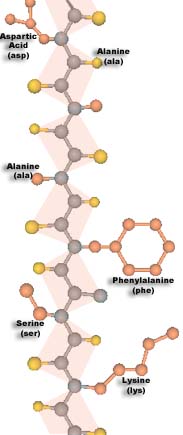|
If any one class of molecules were to be considered the fundamental building blocks of living organisms, it certainly would be proteins. They are the most versatile of all molecules. In some proteins the strands of polypeptide chains that we encountered in Chapter 20 are twisted about one another into larger cables and fibers, which are used for connections, support, and structure. These are the fibrous proteins, found in hair, skin, claws, muscle, tendons, and insect fibers. In a second class of proteins, which have entirely different molecular architecture, the polypeptide chains are coiled back and forth on themselves to make compact, ellipsoidal molecules, 25Å to 200Å in diameter. These are the globular proteins, which are chemical agents whose job is to act with, or on, other molecules and macromolecules. The catalytic enzymes are the most familiar of the globular proteins, but others serve as oxygen carriers (hemoglobin), electron carriers (cytochromes), and protective antibodies (gamma globulins). Right: Polypeptide backbone and side groups in a protein. With the help of Chapter 20, identify the non-carbon atoms (H, N, O) and indicate one amino acid residue. (Only amide hydrogens are drawn) |

|